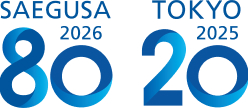Don’t Put All Your Eggs in One Basket – A Suspension of Examination Will Be Possible for a Divisional Application Filed Along with an Appeal as a Fall-back Position
2023.03

©LunarCat Images/iStock
Background
In Japanese patent practice, the time window during which an appeal can be filed against a rejection decision by the Examiner may be the last opportunity to file a divisional application. Therefore, it is quite natural for an Applicant who is considering filing an appeal to also consider filing a divisional application as a fall-back position, in order to avoid the risk of losing everything. However, under the current practice, when the above strategy is implemented, since both cases are processed by the Japan Patent Office (JPO) in parallel, a first OA may be issued for the divisional application (i.e., the child) before the result of the appeal for the earlier application (i.e., the parent) is revealed. In such a case, the Applicant must deal with the OA issued for the child, without knowing the result of the appeal for the parent. Obviously, most Applicants don’t welcome this, as they generally wish to deal with these two cases in a consecutive manner (i.e., the parent first, and then the child, if necessary), rather than in parallel. For example, if it is revealed that the appeal succeeded, the divisional application will perhaps be withdrawn.
Summary of the New Practice
In order to help Applicants construct such a prosecution strategy in a more effective and economical manner, the JPO announced that they will change their practice in this regard as of April 1, 2023. Specifically, for any divisional applications filed as a fall-back position for a parent under appeal, wherein a request for examination is filed on or after April 1, 2023, the examination thereof can be suspended until the result of the appeal is revealed by filing a suitable request in this regard.
Eligible Divisional Applications
More specifically, eligible divisional applications for this new practice must meet the following requirements:
I) the request for examination is filed on or after April 1, 2023;
II) the application was filed after a rejection decision for the parent, and is directly based on the parent (i.e., a child, rather than a grandchild based on the child);
III) an appeal against the rejection decision for the parent (or re-examination by the primary Examiner) is pending before the JPO; and
IV) it is reasonable to wait for the results of the appeal (or re-examination).
Note: A re-examination by the same Examiner as the one who rejected the application under appeal will take place before the case is sent to the Appeal Board, if claim amendments were made when filing the appeal.
According to the JPO, unless the claims of the divisional application fail to define any technical features (e.g., an omnibus claim such as “an invention as described in the specification”), the above requirement IV will basically be met.
How to Request Suspension
A suitable request for suspending the examination of the child must be submitted within 5 JPO business days starting from the date of filing the request for examination. Simple statements that the above requirements are met are themselves sufficient. No technical discussions (e.g., the patentability of the child) are needed.
What Will Happen
After the request for suspension is examined by the JPO, the result will be sent to the Applicant via e-mail. If the request is allowed, the examination of the child will be suspended until three months after any of the following events:
a) a grant decision is delivered to the Applicant as a result of a re-examination of the parent;
b) a decision by the Appeal Board is delivered to the Applicant as a result of the appeal for the parent; or
c) the appeal for the parent is withdrawn, or the appeal as such is rejected for formality reasons etc.
The time period when an examination is suspended based on the above request will not be taken into account when calculating the patent term extension.
Our Suggestions
Although we believe that this new practice will bring a huge benefit to users, there still remains another unsolved issue – namely, involving cost. Specifically, a request for examination must be filed within 3 years from the filing date of the parent (an international filing date for a national phase entry of a PCT application), or 30 days from the filing date of the divisional application. Thus in many cases, this official fee must be paid before the result of the appeal is revealed; the new practice still requires Applicants to do so.
In view of this, as the official fee for requesting examination is calculated based on the number of claims, in order to minimize the initial cost, we suggest amending the set of claims of the child (before or concurrently with the filing of a request for examination) so that it only includes one claim. The reason therefor is that the number of claims can be increased after the result of the appeal is revealed, if necessary, by way of amendment as long as the amendment is submitted before the first OA is issued, while paying additional fees for requesting examination corresponding to the newly added claims. Moreover, we believe that doing so will not render your divisional application ineligible for the new practice, as long as Claim 1 includes some technical features, since the above requirement IV is considered to be met (see above). In this context, an omnibus claim should be avoided, as a divisional application with such a claim will be ineligible.


